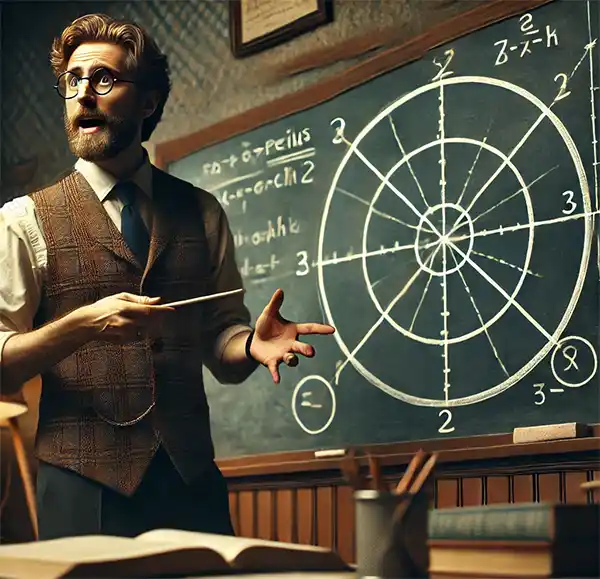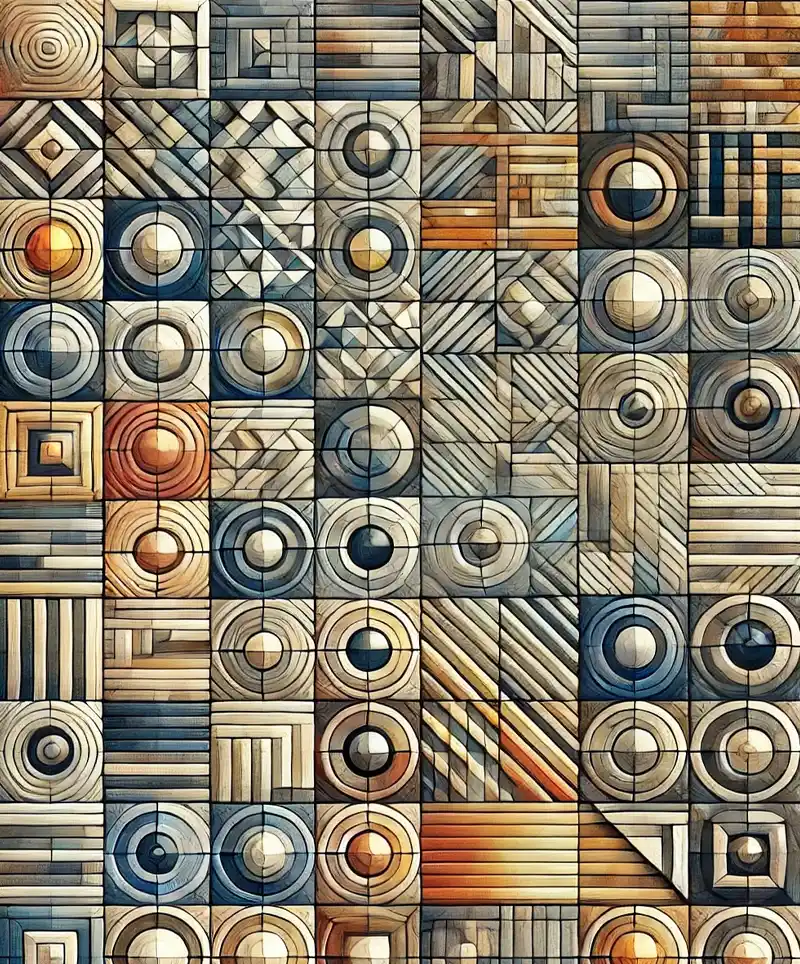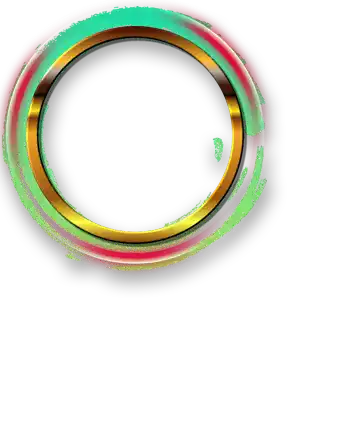Embracing the Art of Roundness
Look for Circles Day, celebrated each year on November 2nd, invites us to take a closer look at the world around us—quite literally. It’s a day to pause and search for circles in places we may otherwise overlook, from the obvious (bicycle wheels) to the unexpected (coffee cup stains on your favorite desk). Circles are everywhere, bringing balance, symmetry, and a bit of fun to our lives. So, let’s delve into the origins, significance, and joy of spotting circles in our day-to-day lives.
Why Circles? A Brief History of Roundness
Since ancient times, humans have been fascinated by circles. Early astronomers looked up at the round sun and moon, figuring out that their circular shapes were more than just an optical illusion. Ancient builders used circular designs in their constructions, from the stone circles at Stonehenge to the rounded arches in Roman architecture. Even mathematicians got in on the action: as early as 2000 B.C., Babylonians were calculating the circumference of a circle, while Greeks famously measured Pi to better understand the elusive ratio of a circle’s circumference to its diameter.
 Circles have come to symbolize unity, eternity, and wholeness, given that they have no beginning or end. You might say that circles are the great diplomats of shapes—everyone fits in, and no one feels left out. From ancient cultures to modern symbolism, the shape has remained an icon, reminding us that there’s something magical about a perfect curve.
Circles have come to symbolize unity, eternity, and wholeness, given that they have no beginning or end. You might say that circles are the great diplomats of shapes—everyone fits in, and no one feels left out. From ancient cultures to modern symbolism, the shape has remained an icon, reminding us that there’s something magical about a perfect curve.
Let’s be honest: circles are so common that we often ignore them. But Look for Circles Day invites us to reconsider this humble shape and rediscover its beauty and charm. Here are a few circles we might encounter daily without giving them a second thought:
- Clocks: Round clocks have been hanging on walls for centuries, and while digital clocks may be taking over, nothing beats the classic look of a round clock face.
- Wheels: Arguably one of humanity’s best inventions, the wheel has taken us from horse-drawn carts to hybrid cars. Plus, the iconic phrase “reinventing the wheel” is a nod to how perfect the circle is for movement.
- Coins: Whether it’s a penny or a dollar, our currency is usually circular, reminding us that money really does go round and round.
- Plates and Bowls: If you ate breakfast this morning, chances are your cereal was in a circular bowl, and your toast sat neatly on a round plate.
- Lenses: Glasses, binoculars, and cameras all rely on circular lenses, allowing us to see things up close or far away with clarity.
It’s amazing how much we rely on circles without even noticing them. Each circle has a purpose, adding function and beauty to our everyday lives.
Circles aren’t just pretty; they’re also one of the most important shapes in science and engineering. Circles are naturally strong because stress is distributed evenly around them, which is why structures like arches and domes are often circular. Circles are essential in fields like physics, where planets orbit in elliptical (almost circular) paths and waves ripple in circles. Even the water droplets in your morning shower head out in circular waves, showing how nature loves a good curve.
And then there’s Pi—the mathematical constant representing the relationship between a circle’s circumference and diameter. With infinite decimal places, Pi is the superstar of math. For any circle, no matter how big or small, Pi tells you how to measure it. If Pi sounds confusing, you’re not alone; mathematicians have been chasing its digits for thousands of years!
Ways to Celebrate Look for Circles Day
There are plenty of ways to get into the spirit of Look for Circles Day. Here are a few fun ideas to get started:
- Go on a Circle Hunt: Head outside and look for circles in nature—flowers, tree rings, snail shells, or even the round eyes of an owl if you’re lucky enough to spot one.
- Make Art with Circles: Gather up round objects in your home—cups, lids, and coins—and trace them onto a piece of paper to create a collage. Add colors and patterns to make it a masterpiece.
- Bake a Circular Treat: Whip up some round cookies, cupcakes, or even a pizza! After all, circles don’t just look good; they taste good too.
- Circle Meditation: Draw a large circle on a piece of paper and slowly fill it with patterns, like mandalas. It’s a relaxing, meditative activity that can help you unwind.
Circles are everywhere in culture. From wedding rings symbolizing eternity to traffic signs that round us up and keep us moving safely, circles have a unique way of speaking to us. Ancient cultures saw circles as symbols of life cycles and cosmic order, while many modern spiritual practices still use circles to represent harmony and protection.
And then there are those “crop circles” that keep popping up mysteriously in fields worldwide. Are they messages from extraterrestrial beings or just art by some very creative (and possibly bored) humans? Either way, crop circles add a little mystery and intrigue to the world of round shapes.
Fun Facts About Circles
Before you go on your own circle hunt, here are some quirky facts about circles to inspire you:
- The Circle Dance: The ancient Greeks and Romans celebrated the circle with dances in a circular formation, which they believed brought unity and connection.
- Round Table Matters: King Arthur’s famous Round Table symbolized equality, with no one at the head. All knights were considered equal.
- Dizzying Pi: The symbol Pi (π) was first used in 1706 by mathematician William Jones, and it has since taken on a life of its own, with Pi Day celebrated every March 14.
- Rolling on the Moon: When NASA sent rovers to Mars and the Moon, they relied on trusty, circular wheels to get the job done. Turns out, circles are universal!
Look for Circles Day is more than just a game of “I Spy.” It’s a chance to see the world through a new lens, appreciating a shape that connects us to the natural world, science, and each other. It’s an opportunity to recognize the balance, harmony, and simplicity that circles bring into our lives, and to enjoy the whimsical side of geometry.
So on November 2nd, go out there and spot as many circles as you can. Who knows? You might just develop a newfound appreciation for the round wonders all around you. And the best part? You’ll have come full circle by the end of the day—just as nature intended.
Please Share our Content






 Circles have come to symbolize unity, eternity, and wholeness, given that they have no beginning or end. You might say that circles are the great diplomats of shapes—everyone fits in, and no one feels left out. From ancient cultures to modern symbolism, the shape has remained an icon, reminding us that there’s something magical about a perfect curve.
Circles have come to symbolize unity, eternity, and wholeness, given that they have no beginning or end. You might say that circles are the great diplomats of shapes—everyone fits in, and no one feels left out. From ancient cultures to modern symbolism, the shape has remained an icon, reminding us that there’s something magical about a perfect curve.








 "Sláinte!" is a traditional Irish expression used as a toast, equivalent to "Cheers!" in English.
"Sláinte!" is a traditional Irish expression used as a toast, equivalent to "Cheers!" in English.